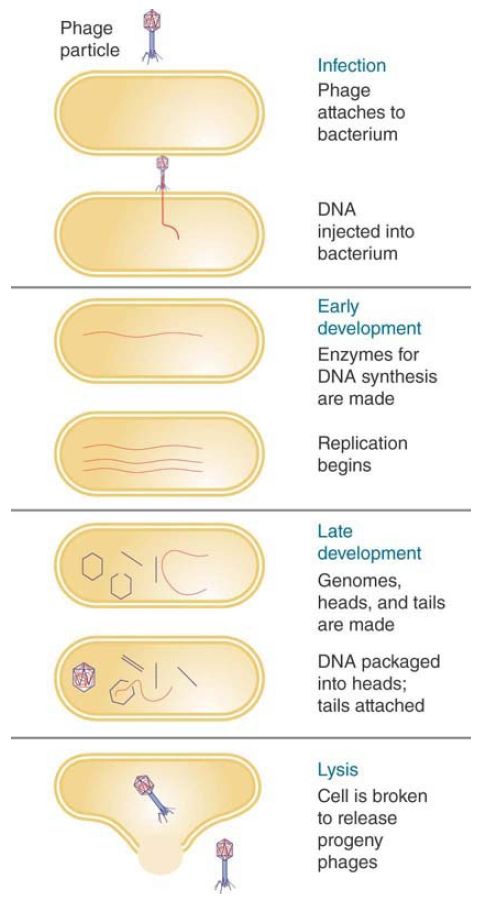

النبات

مواضيع عامة في علم النبات

الجذور - السيقان - الأوراق

النباتات الوعائية واللاوعائية

البذور (مغطاة البذور - عاريات البذور)

الطحالب

النباتات الطبية


الحيوان

مواضيع عامة في علم الحيوان

علم التشريح

التنوع الإحيائي

البايلوجيا الخلوية


الأحياء المجهرية

البكتيريا

الفطريات

الطفيليات

الفايروسات


علم الأمراض

الاورام

الامراض الوراثية

الامراض المناعية

الامراض المدارية

اضطرابات الدورة الدموية

مواضيع عامة في علم الامراض

الحشرات


التقانة الإحيائية

مواضيع عامة في التقانة الإحيائية


التقنية الحيوية المكروبية

التقنية الحيوية والميكروبات

الفعاليات الحيوية

وراثة الاحياء المجهرية

تصنيف الاحياء المجهرية

الاحياء المجهرية في الطبيعة

أيض الاجهاد

التقنية الحيوية والبيئة

التقنية الحيوية والطب

التقنية الحيوية والزراعة

التقنية الحيوية والصناعة

التقنية الحيوية والطاقة

البحار والطحالب الصغيرة

عزل البروتين

هندسة الجينات


التقنية الحياتية النانوية

مفاهيم التقنية الحيوية النانوية

التراكيب النانوية والمجاهر المستخدمة في رؤيتها

تصنيع وتخليق المواد النانوية

تطبيقات التقنية النانوية والحيوية النانوية

الرقائق والمتحسسات الحيوية

المصفوفات المجهرية وحاسوب الدنا

اللقاحات

البيئة والتلوث


علم الأجنة

اعضاء التكاثر وتشكل الاعراس

الاخصاب

التشطر

العصيبة وتشكل الجسيدات

تشكل اللواحق الجنينية

تكون المعيدة وظهور الطبقات الجنينية

مقدمة لعلم الاجنة


الأحياء الجزيئي

مواضيع عامة في الاحياء الجزيئي


علم وظائف الأعضاء


الغدد

مواضيع عامة في الغدد

الغدد الصم و هرموناتها

الجسم تحت السريري

الغدة النخامية

الغدة الكظرية

الغدة التناسلية

الغدة الدرقية والجار الدرقية

الغدة البنكرياسية

الغدة الصنوبرية

مواضيع عامة في علم وظائف الاعضاء

الخلية الحيوانية

الجهاز العصبي

أعضاء الحس

الجهاز العضلي

السوائل الجسمية

الجهاز الدوري والليمف

الجهاز التنفسي

الجهاز الهضمي

الجهاز البولي


المضادات الميكروبية

مواضيع عامة في المضادات الميكروبية

مضادات البكتيريا

مضادات الفطريات

مضادات الطفيليات

مضادات الفايروسات

علم الخلية

الوراثة

الأحياء العامة

المناعة

التحليلات المرضية

الكيمياء الحيوية

مواضيع متنوعة أخرى

الانزيمات
Lytic Development Is Divided into Two Periods
المؤلف:
JOCELYN E. KREBS, ELLIOTT S. GOLDSTEIN and STEPHEN T. KILPATRICK
المصدر:
LEWIN’S GENES XII
الجزء والصفحة:
5-6-2021
2299
Lytic Development Is Divided into Two Periods
KEY CONCEPTS
- A phage infective cycle is divided into the early period (before replication) and the late period (after the onset of replication).
- A phage infection generates a pool of progeny phage genomes that replicate and recombine.
Phage genomes by necessity are small. As with all viruses, they are restricted by the need to package the nucleic acid within the protein coat. This limitation dictates many of the viral strategies for reproduction. Typically, a virus takes over the apparatus of the host cell, which then replicates and expresses phage genes instead of the bacterial genes.
Usually, the phage has genes whose function is to ensure preferential replication of phage DNA. These genes are concerned with the initiation of replication and may even include a new DNA polymerase. Changes are introduced in the capacity of the host cell to engage in transcription. They involve replacing the RNA polymerase or modifying its capacity for initiation or termination.
The result is always the same: Phage mRNAs are preferentially transcribed. As far as protein synthesis is concerned, the phage is, for the most part, content to use the host apparatus, redirecting its activities principally by replacing bacterial mRNA with phage mRNA.
Lytic development is accomplished by a pathway in which the phage genes are expressed in a particular order. This ensures that the right amount of each component is present at the appropriate time. The cycle can be divided into the two general parts illustrated in FIGURE1:
- Early infection describes the period from entry of the DNA to the start of its replication.
- Late infection defines the period from the start of replication to the final step of lysing the bacterial cell to release progeny phage particles.

FIGURE 1. Lytic development takes place by producing phage genomes and protein particles that are assembled into progeny phages.
The early phase is devoted to the production of enzymes involved in the reproduction of DNA. These include the enzymes concerned with DNA synthesis, recombination, and sometimes modification. Their activities cause a pool of phage genomes to accumulate. In this pool, genomes are continually replicating and recombining, so that the events of a single lytic cycle concern a population of phage genomes.
During the late phase, the protein components of the phage particle are synthesized. Often, many different proteins are needed to make up head and tail structures, so the largest part of the phage genome consists of late functions. In addition to the structural proteins, “assembly proteins” are needed to help construct the particle, although they are not incorporated into it themselves. By the time the structural components are assembling into heads and tails, replication of DNA has reached its maximum rate. The genomes then are inserted into the empty protein heads, tails are added, and the host cell is lysed to allow release of new viral particles.
 الاكثر قراءة في مواضيع عامة في الاحياء الجزيئي
الاكثر قراءة في مواضيع عامة في الاحياء الجزيئي
 اخر الاخبار
اخر الاخبار
اخبار العتبة العباسية المقدسة

الآخبار الصحية















 قسم الشؤون الفكرية يصدر كتاباً يوثق تاريخ السدانة في العتبة العباسية المقدسة
قسم الشؤون الفكرية يصدر كتاباً يوثق تاريخ السدانة في العتبة العباسية المقدسة "المهمة".. إصدار قصصي يوثّق القصص الفائزة في مسابقة فتوى الدفاع المقدسة للقصة القصيرة
"المهمة".. إصدار قصصي يوثّق القصص الفائزة في مسابقة فتوى الدفاع المقدسة للقصة القصيرة (نوافذ).. إصدار أدبي يوثق القصص الفائزة في مسابقة الإمام العسكري (عليه السلام)
(نوافذ).. إصدار أدبي يوثق القصص الفائزة في مسابقة الإمام العسكري (عليه السلام)


















